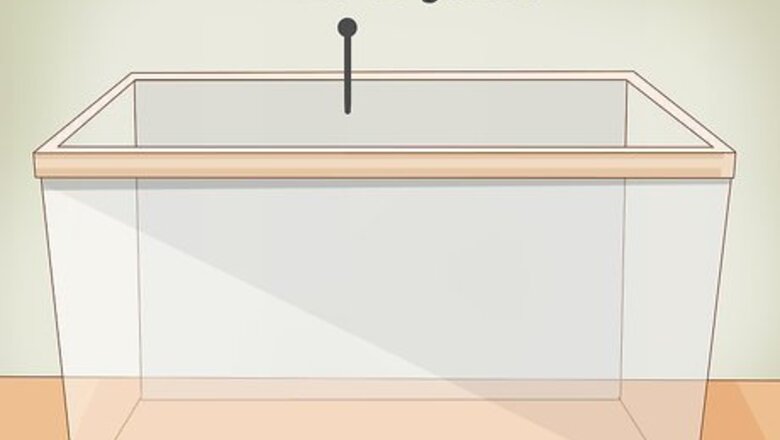
views
Setting Up Your Tank
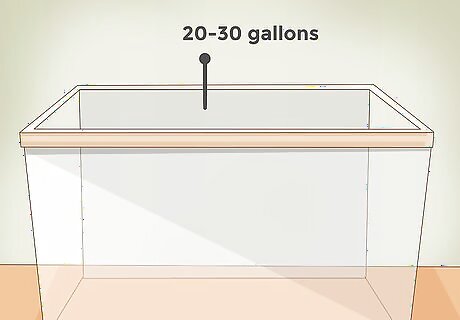
Buy at least a 20–30 gallon (75.7–113.6 L) tank. A suitable tank is crucial for having a happy, healthy clown fish. Unfortunately, online pet-care resources can differ greatly when it comes to tank recommendations for clown fish. Some sources recommend a minimum tank size of just eight to ten gallons, while others suggest a minimum of no less than 20 or 30 gallons (75.7 or 113.6 L). As a general rule, it's almost always better to have a tank that's too big than one that's too small, as small tanks require extra maintenance and can be much more susceptible to sanitation problems. Thus, for the clown fish's health and safety, most new owners should aim for at least a 20–30 gallon (75.7–113.6 L) tank. The dangers of having a tank that's too small can't be overstated. If the filtration system in the tank is insufficient, impurities can quickly build up in the tank's water, leading to health problems for the fish like fin rot, marine ich, and more. In addition, if multiple fish share the tank, cramped quarters can cause territorial competition, which may lead to stress, injury, or even death.
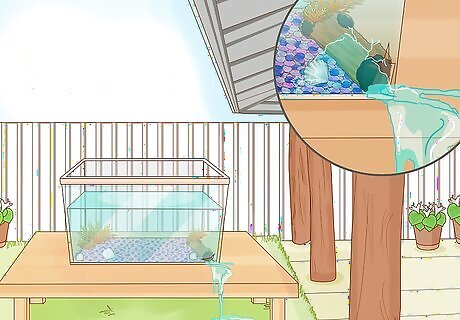
Test your tank for defects. You do not want to discover that your tank contains a leak or is poorly constructed when it's completely full of water. A proper tank should be completely water-tight and completely level. Test for imperfections in either of these categories with the methods below: Test for leaks by filling the tank to about 1/3 of the way full in a water-safe location (like a shower or your yard.) Dry the outside of the tank with a towel and wait about one hour. Look for beads of water along the corners or pooling of water at the base — if you see these signs, return your tank for a refund. Test for levelness with a carpenter's level. Alternatively, add a few inches of water and marking the water line on either side — if the two lines differ, the tank is not level. Keep in mind that this may reflect a problem in the surface beneath it rather than in the tank itself.
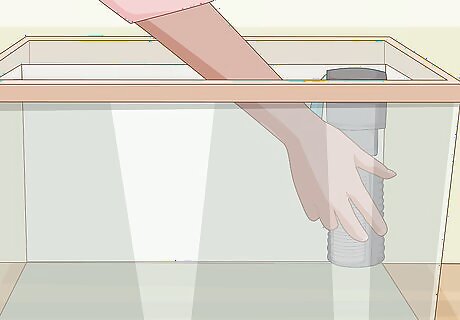
Add your filtration system. A good filtration system is crucial for any aquarium (especially, as noted above, smaller ones.) Unlike in the ocean, in an aquarium, there's nowhere for impurities from biological waste to go, so it's necessary to remove them via filter so that they don't build up and start harming the fish. Though filtration systems can vary greatly from product to product, below are some very general instructions for setting up a typical undergravel filter for a saltwater aquarium (consult your product's packaging or the personnel at a local pet store for more information): Rinse all parts of the filtration system and place the lower filters (which usually resemble square grids or plates) at the bottom of the tank. Attach all necessary tubes, valves, and air pumps to the lower filters. Usually, the filter system will contain something called a "check valve" which is marked with an arrow — the arrow should be pointing up and the valve should be about three to four inches from the main air pump. Attach the lift tubes to the filter plates, then attach the powerheads to the lift tubes. The powerheads should sit below the surface of the water when the tank is full. Note: A special, separate type of filter called a protein skimmer is recommended, but not always required.
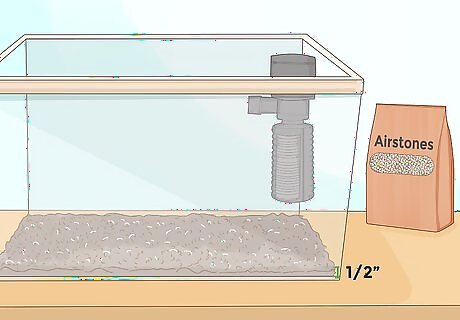
Add the substrate and/or airstones. Rinse your substrate (the gravel-like substance you usually see at the bottom of home aquariums) in a kitchen colander before adding it to the tank. Be sure to use a specially-designed marine substrate recommended by your local pet store, not ordinary gravel from outdoors. If you're using an undergravel filtration system, the substrate should cover the filter plates completely in a thin layer about 1/2 inch to an inch thick. If you're using airstones (decorative devices that produce bubbles and circulate the water), rinse them and add them to the bottom of the tank now.
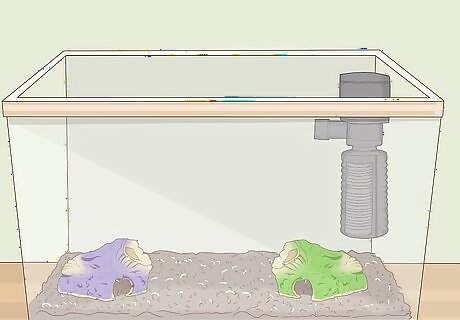
Add plenty of hiding places to the aquarium. Clownfish are famous for spending much of their time hiding in the fronds of sea anemones and rocky crevices in coral reefs. Give your clown fish a happy home by adding plenty of rocks, plants, artificial reef formations, and decorations for it to hide in. Rinse each new addition to the tank before adding it. Though clown fish enjoy a mutually-beneficial relationship with sea anemones in the wild, you don't need to add sea anemones to your tank at home — having plenty of rocky crevices should be fine. If you do intend to add sea anemones, know that they can be somewhat more difficult to care for than clownfish themselves, as they require a high-quality filtration system, good light, and frequent feeding. Consult an online aquarium resource like Aquacon.com for detailed anemone care information. The following sea anemone species make good hosts for clown fish: Entacmaea quadricolor, Heteractis magnifica, Stichodactyla gigantea, and Stichodactyla haddoni. Although adding an anemone is not necessary, it is incredible to watch this amazing symbiotic relationship unfold in your tank!
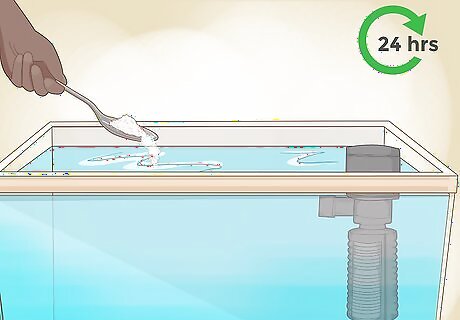
Fill the tank and add marine salt. If you have everything above sorted out and your tank appears to be in good working order, fill it to the top with water. Finally, add enough marine salt to produce a specific gravity of 1.020 to 1.026, which is the ideal salinity level for clown fish. The amount you need will differ based on the size of your tank — larger tanks will need more, while smaller tanks will need less. Consult your marine salt's packaging for exact usage instructions. Most pet care resources recommend using a device called a hydrometer to measure the specific gravity of your tank — commercial-grade varieties are usually available at pet stores for cheap. In addition, many pet stores offer free water testing services. Understand that tanks can require up to a day to achieve a uniform salinity, so be willing to let your tank sit for up to 24 hours after adding your salt. Don't use table salt in place of marine salt. Marine salt contains special chemical additives not found in ordinary table salt.
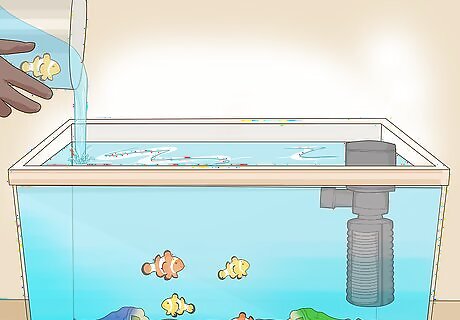
Add the clown fish. Your tank is ready to go! At this point, you may add your clown fish and start caring for it according to the directions in the section below!
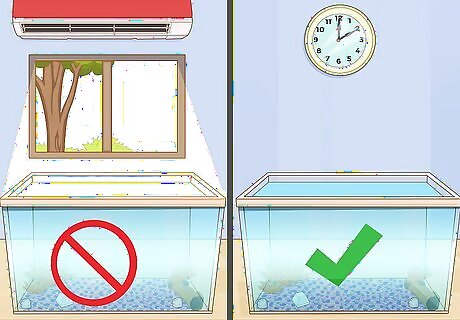
Place your tank in a safe, secluded spot. Many first-time aquarium owners underestimate the ease of preparing and maintaining an aquarium. In fact, even the physical location of the tank can have a major effect on the health and happiness of the fish inside. As you plan a spot for your aquarium, keep the following tips in mind: Aquariums should be out of direct sunlight and away from heaters, air conditioners, ventilation openings, and windows. Sudden changes in water temperature can be harmful to the fish. Aquariums should be within range of an electrical outlet (to power the lighting and filtration systems), but shouldn't be up against a wall, as this usually makes it difficult to perform maintenance and change filters. Aquariums usually weigh about 10 pounds (4.5 kilograms) for every gallon of water they contain. This means that a 30 gallon (113.6 L) tank will weigh about 300 pounds (136 kilograms.) Keep this in mind when you're choosing a table or stand to support it. Aquariums should be completely level with the ground.
Meeting Your Clown Fish's Needs
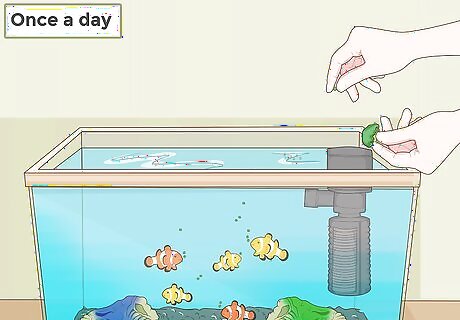
Feed your fish with adequate food about once per day. Compared to more finicky species of fish, clown fish have nutritional needs that are very easy to meet. Clownfish should readily consume most commercial marine fish flakes. For maximum growth, try adding a pinch of fish flakes to the tank about once per day. You want to add about enough food each feeding that fish can consume all of it within about two or three minutes. Most clown fish will survive just fine with feedings every-other day. However, this will slow down their rate of growth. Since clown fish are omnivorous, they can also eat both vegetable and animal matter, so consider occasionally adding small chunks of algae, shrimp, cut-up worms, and so on to the tank for a greater range of nutrition. Your fish should appreciate this!
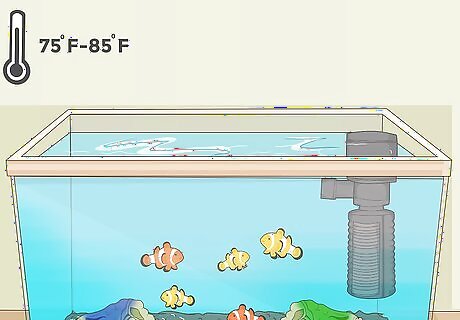
Keep your tank at a tropical temperature. Clown fish are native to tropical parts of the ocean — specifically, the warmer parts of the eastern Indian ocean and the western Pacific ocean extending from the equator all the way to Australia. To replicate the warm, mellow waters of the tropics, keep your aquarium at a temperature of about 75-85 F (about 24-30 C.) If you don't live in the tropics, you can keep your tank warm year-round with a submersible heater — these resemble long, skinny tubes that insert easily into the corner of an aquarium. Because heaters range in size and power, be sure to buy a heater that's rated for your size of tank.
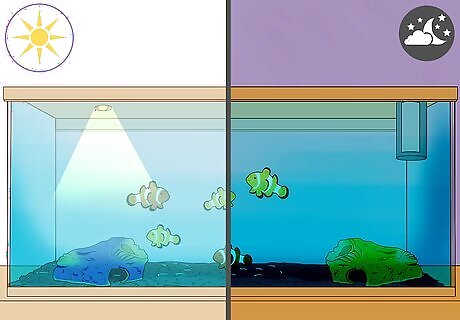
Recreate a normal day/night cycle. Ideally, your tank should have its own lighting system to provide any plants in it with much-needed solar energy for photosynthesis. Part of your daily maintenance should be to make sure that this light turns off at night. This replicates the normal cycle of day and night that your tank's inhabitants would experience in the wild and also helps keeps the plants and algae in your tank from growing too rapidly. Note that most aquarium lights have timers that allow you to easily set them to an automatic cycle.
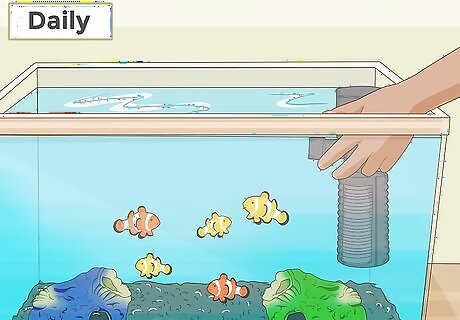
Check the filtration system daily. Breakdowns in your tank's filtration system can create a toxic environment for your fish over time. To prevent this, it's important to check every part of your filtration system regularly, if not daily. This shouldn't take more than a few seconds — all you need to do is quickly make sure that everything appears to be functioning correctly. Below are a few quick tips on what to look for: Filter: All pumps should be running smoothly and water should be flowing through the filter without trouble. There should be no obstructions in any of the lines. Aerators: A small, continuous stream of bubbles should be floating out of the aerator. Protein skimmer: Water should be passing through the skimmer easily; foam should be generating inside the skimmer. The waste collector should not be full — if it is, empty it.
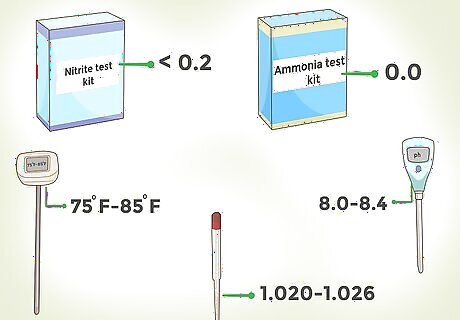
Monitor your water quality regularly. In addition to checking your water quality devices daily, it's important to test the water itself to ensure your clown fish has optimal conditions to thrive in. Right after you set up your tank, you'll want to check the water quality about once per day, but as your measurements stabilize at a suitable level, you can start to check about once per week. Below are ideal water quality measurements (along with the tools you'll need to measure them, all of which should be available at your pet store): Temperature: 75-85 F (about 24-30 C) — thermometer Salinity: Specific gravity of 1.020 to 1.026 — hydrometer pH: 8.0-8.4 — pH meter (see: [[Test Ph in a Fish Tank|our pH-testing article) Ammonia: 0.0 (too low to detect) — Ammonia test kit Nitites: < 0.2 parts per million — Nitrite test kit
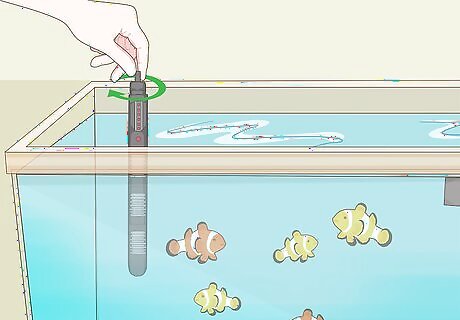
Address water quality issues immediately. If you find during one of your routine test that your aquarium doesn't meet one of the important quality metrics above , don't waste time — immediately address the source of the problem to keep your clown fish healthy. See below: Temperature: If too high, reduce heater settings; if too low, increase heater settings or buy a heater that's rated for your tank size. Salinity: If too high, replace some tank water with fresh water; if too low, add marine salt. pH: There are many causes for incorrect pHs; consult a fish care resource for specific strategies. Be sure to make any pH adjustments gradually — rapid changes can harm fish. Ammonia: If you detect any ammonia, your levels are too high — check the filtration system for problems. Consider replacing your filters. If your filtration system is working, it may be too small for the size of your tank or the number of fish you have. Nitrites: See ammonia.
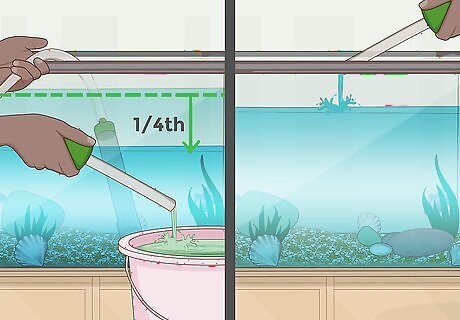
Change about one quarter of the water every few weeks. Though aquariums are often described as "closed systems," in reality, they still require the regular addition of outside water to stay clean and habitable for your fish. You don't have to replace the water all at once, however — instead, you can do it gradually and continuously by removing about a quarter of the water every two to three weeks and replacing it with new water. Keep in mind, however, that your new water must be the correct salinity for your ank unless you want to cause a potentially dangerous dip in salt levels.
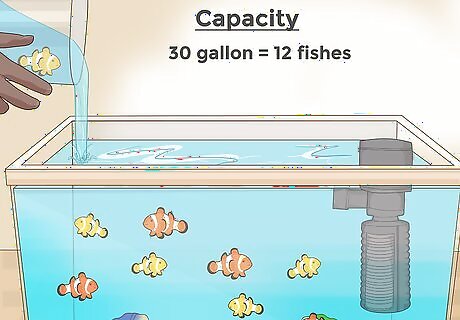
Introduce any new fish gradually. Adding more fish to your tank is a great way to make your clown fish's life more interesting. However, it's generally considered best to add new fish to the tank one by one over a period of time, rather than adding many at once. This gives the clown fish (whose species is known for being somewhat territorial) time to adjust to the new visitor. Be willing to take at least six months to get your tank to maximum capacity. In addition, taking a gradual approach can prevent sudden ammonia "spikes" which can be deadly to fish. The sudden addition of many fish to the same tank will cause ammonia levels from the fish's waste to soar quicker than the bacteria in the tank (which neutralize the ammonia) have a chance to grow. Keep in mind the maximum capacity of your tank as you add new fish. As a very general rule, you should have a maximum of one "inch of fish" per 2.5 gallons (9.5 L) of water in the tank. For example, a 30 gallon (113.6 L) tank could hold a maximum of about 12 1-inch fish or six 2-inch fish or four 3-inch fish, etc.
Solving Common Problems
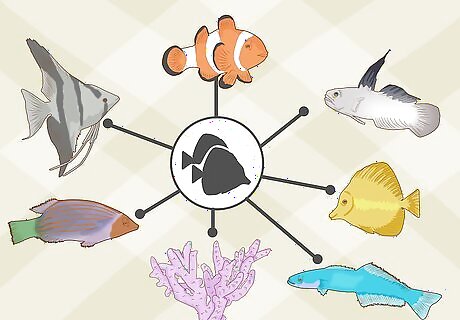
Pair clown fish with docile fish to reduce fighting. If you match them with peaceful, non-aggressive species, clown fish can be great neighbors. On the other hand, if you match them with territorial, aggressive species, they can get into fights, leading to injuries (or even death) for both fish. Below are some examples of gentle species that pair well with clown fish: Wrasses Tangs Gobies Dartfish Angelfish Damselfish Pufferfish Anemones Marine Invertebrates Coral Note: Do not pair clown fish with other clown fish of the same species — they are likely to fight.
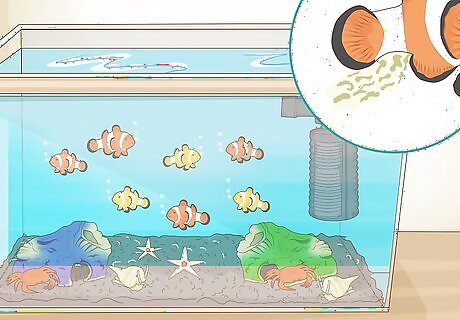
Consider adding scavengers to deal with waste. The buildup of biological waste is one of the number one threats to an aquarium fish's health. To deal with danger, it can be a great idea to add a few invertebrate scavengers to deal with the waste. These sorts of animals usually feed on decaying plant and animal matter, making them perfect for cleaning up leftover waste and easing the burden on your filter system. Best of all, they're not likely to fight with clown fish for territory or resources. Some good choices are: Marine snails Small crabs Starfish
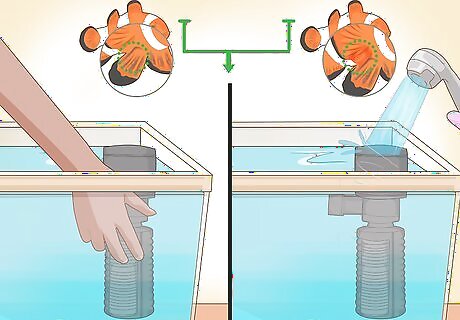
Improve water quality for fin rot. Fin rot is a common aquarium ailment whose symptoms look like its name suggests: decaying, dirty-looking fins that seem to be falling apart and sometimes swelling at the base of the fin. This is almost always a water quality issue, so, if you see this, take the following steps: Check the filtration system for errors and, if necessary, clean or replace the filter. Consider increasing the pace that you replace your tank's water Consider adding scavengers (see above) Consider getting aquarium antibiotics from a vet or pet store Remove built-up algae (see below)
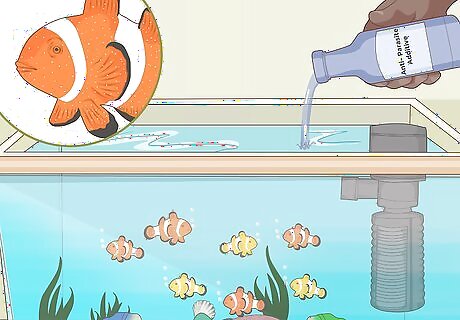
Use anti-parasite techniques for marine ich. Marine ich (not "itch") is a common problem in saltwater aquariums caused by a microscopic parasite that burrows into the fish's skin and gills. This illness can have a variety of symptoms, including small white "dots" on the skin and gills, clouded eyes, excessive skin mucus, difficulty breathing, and discoloration. In this case, the most direct fix is usually to add copper-based anti-parasite additives to the water and to improve the water quality with the tips above. Another tactic is to quarantine all of your tank's fish in a separate tank with low salinity. This disrupts the parasite's natural life cycle, killing it. Consult a saltwater aquarium resource for more information.
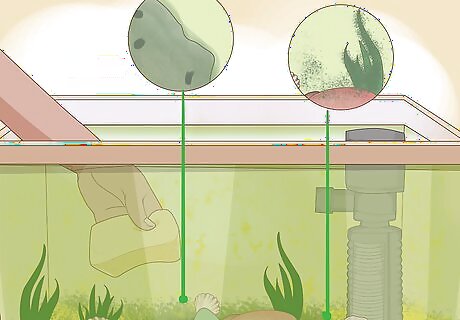
Take an aggressive stance toward algae. Over time, algae, a creeping green "slime" or "moss"-like organism, will usually gradually build up in an aquarium. A little bit of algae can be a good thing, as clown fish and other marine life can feed on it. However, if allowed to grow out of control, algae can eventually spread throughout the tank and start competing with the other organisms for light and nutrients, essentially smothering them. To prevent this, it's best to deal with algae as early as possible with preventative measures. Use the following steps to manage algae growth: Keep the tank free of organic waste — don't overfeeds your fish and don't crowd too many organisms into a single tank. Have other plants in your tank — normal plant life will compete with algae for the same resources. Use a scraper or squeegee to regularly remove algae from the walls of the tank. Don't leave your tank's lights on overnight. Stock your tank with a species that eats lots of algae, like catfish.














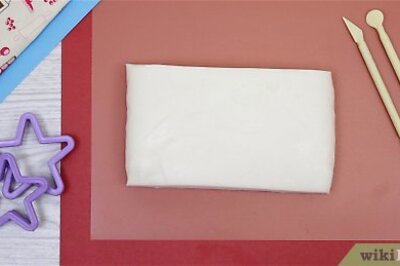

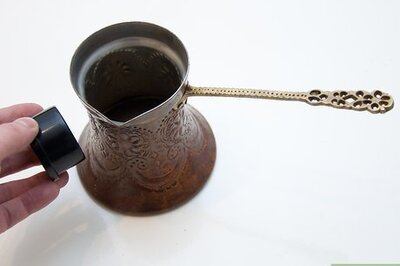



Comments
0 comment